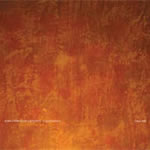|
|
 |
Dusted Reviews
Artist: Jean-François Laporte Album: Soundmatters Label: 23five, Inc. Review date: Aug. 1, 2007 |

|
|
|
 |
Calling the five pieces that comprise Soundmatters compositions misses the mark. Calling them performances is also inaccurate. They are, rather, a finely wrought hybrid of the two. French-Canadian sound artist Jean-François Laporte uses the strengths of both approaches to work up his organic, highly detailed soundworks, injecting them with the directness and spontaneity of performance and developing them the way a composer takes a well-thought out idea and telescopes it into a full-fledged concept. Laporte applies these strengths to sounds he notices and to those he produces.
The evolving drone of “Boule qui roule…” is the product of machine sound interacting with audio software. It’s the most conventional electro-acoustic piece on the record though, as Laporte’s focus lies more squarely on the sounds of the human and natural environment. The album’s centerpiece is “Mantra,” a 26-minute recording of an ice rink’s cooling compressor. Laporte recorded it live, manually manipulating the compressor through various plates and tubes as well as by moving around the machine. The result is a hypnotic audio image. The mechanical purr soothes with its constancy, the gently oscillating bass frequencies mixing with whispered high frequencies and the occasional pulse of a metallic clang. It’s a true no-mind drone, just as effective as anything cooked up by human hands.
Yet Laporte does not equate composition with control. Instead, he allows the sounds themselves, and just as importantly the environment, to dictate direction. “Dans le ventre du dragon” takes place in the hull of an old cargo ship. Various instruments, 15 seconds of reverb and some post-performance tinkering are all Laporte uses to fill the stark atmosphere with rich, full-bodied cries. A similar idea, but more well-developed, is the starting point for the 17 minutes of “Plentitude du vide.” Using copper and aluminum tubes, two prepared baritone saxophones, sax mouthpieces and latex membranes, the Quasar Saxophone Quartet engages in a slow moving dialogue with the acoustics of the Saint-Jean-Baptiste Church. Purring, rasping sounds, evoking in texture and movement the motion of breathing, get transformed from subterranean whispers to a dense siren song of buzzing overtones and excited beatings.
The concise liner notes reveal a lot about the innards of each piece, but they are hardly necessary. One can hear that the desiccated roar of “Électro-Prana” is wind, and that “Mantra” bears the signature of something mechanical. The sounds seem outside, separate from composer, performer and listener alike. This tension between the real and the created, between the objective observation and the subjective perspective, inserts the listeners into a narrative, like that of a first-person camera angle, which forces them to interpret and react to the sounds and their transformations. The audio experience becomes much more immersing and rewarding than more conventional music often allows.
By Matthew Wuethrich
|







